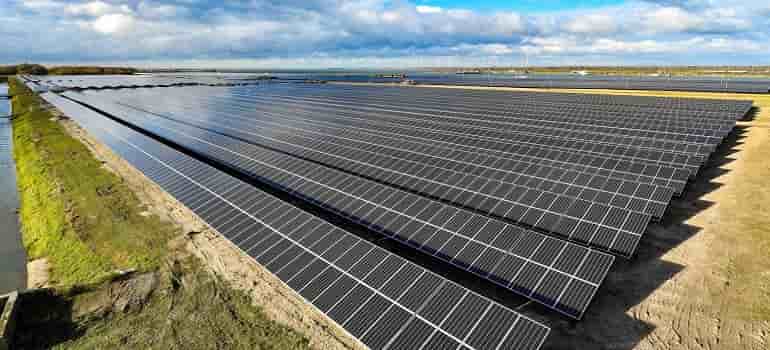
The Indian government set itself a formidable target in 2016: Install a massive 175 gigawatts of renewable energy by the 2021/22 financial year and 275 gigawatts by FY2026/27 to transform the country’s power sector from an expensive, unreliable, and polluting fossil fuel‑based system into a low-cost, reliable and low-emission system based on renewable energy.
To achieve that, India pioneered the ultra-mega solar park and, in the process, overcame a range of challenging obstacles, says IEEFA research analyst Kashish Shah in a new report, India’s Utility-Scale Solar Parks—A Global Success Story.
“It is worth looking back over the last four years to see just how far the Indian renewable energy industry has advanced,” says Shah.
“Indian utility-scale solar parks have kick-started India’s energy sector transition,” says Shah.
Amid myriad policy and project execution issues, India’s utility-scale solar park model has firmly stood its ground. India now houses multiple ultra-mega solar parks with capacities of more than 1GW, and two of them are the largest commissioned solar installations in the world.
The Bhadla Solar Park in Rajasthan is the world’s largest such installation to date, covering more than 14,000 acres with total capacity of 2,245 megawatts (MW).
The ultra-mega power plant (UMPP) concept involves a state government or local distribution company providing a single central grid connection and acquiring land on which the project can be built, shielding developers from procurement and time-delay risks.
“This approach has driven economies of scale and attracted global capital into India’s renewable energy sector over the last five years, with an immediate boon in mid-2017 of halving solar tariffs to a record low of Rs2.44/kWh (US$39/MWh) at the prevailing exchange rate,” says Shah.
The ultra-mega solar parks have attracted foreign capital as well as top global developers to India providing investors with an opportunity to join a US$500-700bn renewable energy and grid infrastructure investment boom in the coming decade.
